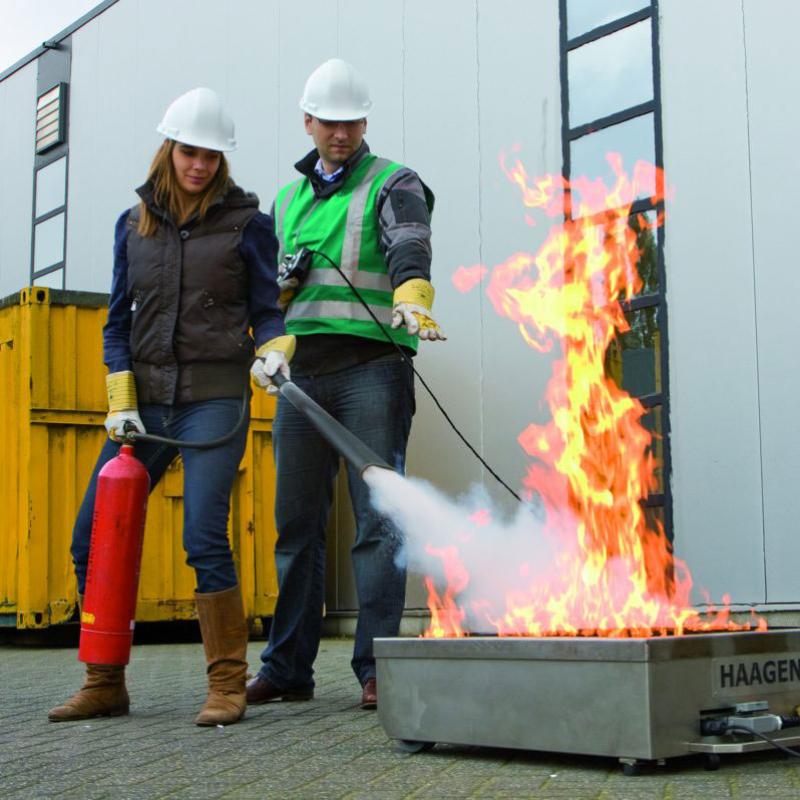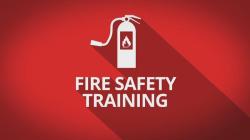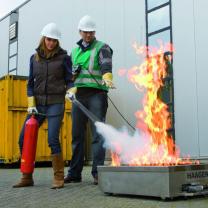What is fire safety training?
Fire safety training is a crucial aspect of workplace safety designed to educate individuals on preventing, responding to, and mitigating the risks associated with fires. The primary goal of fire safety training is to ensure that individuals are equipped with the knowledge and skills necessary to minimize the likelihood of fires, as well as to respond effectively in the event of a fire emergency. The training typically covers a range of topics to address fire prevention, evacuation procedures, and the use of firefighting equipment.
Objectives of Fire Safety Training:
Preventing Fires:
- Understanding the common causes of fires in the workplace.
- Identifying potential fire hazards and taking preventive measures.
- Proper storage and handling of flammable materials.
Emergency Response:
- Knowing how to respond quickly and calmly in the event of a fire.
- Understanding emergency evacuation procedures and escape routes.
- Awareness of assembly points and accountability procedures.
Firefighting Equipment Usage:
- Training on the proper use of firefighting equipment such as fire extinguishers, fire hoses, and fire blankets.
- Understanding the different types of fire extinguishers and their appropriate uses.
Alarm Systems:
- Familiarity with fire alarm systems and how to use them.
- Recognizing the various types of fire alarms and their signals.
Evacuation Drills:
- Conducting regular fire evacuation drills to ensure that everyone knows their roles and responsibilities.
- Practicing the evacuation process to improve efficiency and reduce panic.
Safe Meeting Points:
- Identifying and using designated safe meeting points after evacuation.
- Understanding the importance of headcounts to ensure everyone is accounted for.
Communication Protocols:
- Establishing effective communication during a fire emergency.
- Knowing how and when to contact emergency services.
First Aid and Medical Assistance:
- Basic first aid training for treating minor injuries.
- Knowing how to summon medical assistance for more severe injuries.
Regulatory Compliance:
- Understanding and complying with local fire safety regulations.
- Regularly reviewing and updating fire safety procedures to ensure alignment with regulations.
Content of Fire Safety Training:
Introduction to Fire Safety:
- Overview of the importance of fire safety.
- Statistics on fire incidents and their consequences.
Fire Triangle:
- Understanding the three elements necessary for a fire: heat, fuel, and oxygen.
- How to break the fire triangle to prevent fires.
Fire Prevention Measures:
- Safe handling and storage of flammable materials.
- Proper maintenance of electrical equipment.
- Smoking policies and practices.
Emergency Evacuation Procedures:
- Clear guidance on evacuation routes.
- Responsibilities of individuals during evacuation.
- Importance of not using elevators during a fire.
Use of Firefighting Equipment:
- Training on the types and locations of fire extinguishers.
- Practical demonstrations on how to use fire extinguishers.
Fire Alarm Systems:
- Understanding the different types of fire alarms.
- Recognizing alarm signals and taking appropriate action.
Evacuation Drills:
- Conducting simulated fire drills.
- Reviewing and refining evacuation procedures based on drill outcomes.
Communication Protocols:
- Procedures for alerting others to a fire emergency.
- Emergency contact information and communication channels.
First Aid Training:
- Basic first aid techniques for minor burns and injuries.
- Guidelines for seeking medical assistance for more severe injuries.
Regulatory Requirements:
- Overview of local fire safety regulations.
- Ensuring compliance with legal standards and codes.
Fire safety training is an ongoing process, and regular refreshers and updates are essential to keep individuals informed and prepared for potential fire emergencies. Training should be tailored to the specific needs and risks of the workplace. Additionally, it's important to involve employees in the training process, encourage a culture of safety, and address any specific concerns related to fire safety in the workplace.
Fire Safety Training: A Comprehensive Overview
1. Fire Safety Training: What it Covers
Fire safety training aims to equip individuals with the knowledge and skills necessary to prevent, respond to, and mitigate the risks associated with fires. It typically covers the following key areas:
- Fire prevention: Identifying fire hazards, understanding fire causes, and implementing safe practices to prevent fire outbreaks.
- Fire alarm systems: Recognizing the different types of fire alarms, understanding their function, and responding appropriately to them.
- Fire extinguisher operation: Learning how to use different types of fire extinguishers effectively on various classes of fire.
- Evacuation procedures: Understanding evacuation routes, designated meeting points, and procedures for safe and efficient evacuation.
- Emergency response: Learning how to report a fire, activate the alarm system, call emergency services, and assist others in need.
- First aid: Basic first aid skills, including CPR, are often included in fire safety training to address potential injuries during a fire incident.
2. Teaching Fire Safety Protocols and Procedures:
Training programs use various methods to effectively teach fire safety protocols and procedures. These methods include:
- Interactive lectures: Providing comprehensive information about fire safety concepts, regulations, and best practices.
- Visual aids: Using diagrams, videos, and simulations to demonstrate fire safety procedures and potential scenarios.
- Group discussions and activities: Encouraging active participation and knowledge sharing through interactive exercises and role-playing situations.
- Hands-on practice: Allowing trainees to practice using fire extinguishers, navigating escape routes, and applying first aid skills in controlled environments.
3. Practical Components of Fire Safety Training:
The practical components of fire safety training are crucial for ensuring participants can apply their knowledge and skills in real-world situations. These components typically involve:
- Live fire extinguisher demonstrations: Trainees learn to operate various fire extinguishers on controlled fires under the guidance of qualified trainers.
- Evacuation drills: Participants practice navigating evacuation routes and designated meeting points to ensure familiarity and efficient evacuation during an actual emergency.
- Scenario-based training: Trainees respond to simulated fire incidents, applying their learned skills in realistic situations and making critical decisions under pressure.
Additional Resources:
- National Fire Protection Association (NFPA): https://www.nfpa.org/en
- Occupational Safety and Health Administration (OSHA): https://www.osha.gov/fire-safety
- American Red Cross: https://www.redcross.org/take-a-class/babysitting/babysitting-child-care-training/babysitting-classes
By incorporating a combination of theoretical and practical components, fire safety training equips individuals with the knowledge and skills necessary to take proactive measures against fire hazards, respond effectively in emergency situations, and minimize potential harm to themselves and others.









